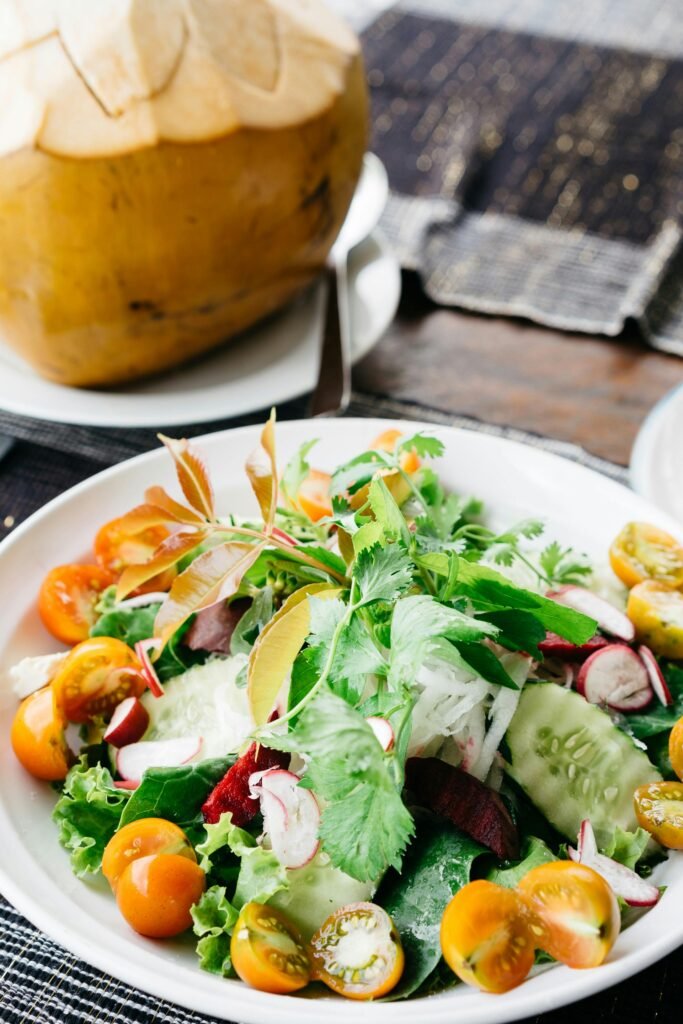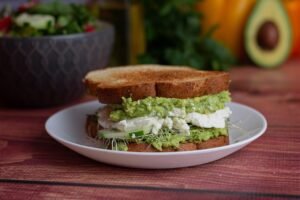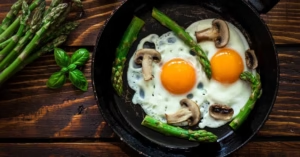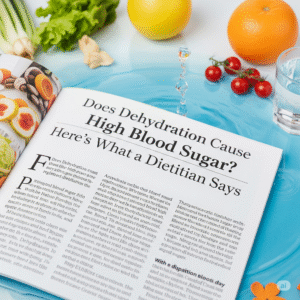Managing blood sugar levels is no small feat. For individuals with diabetes or pre-diabetes, understanding the balance between diet, hydration, and glucose control can significantly improve their health. Here’s a surprising statistic to kick things off: research suggests that even mild dehydration can lead to a spike in blood sugar levels, potentially throwing your management plan off course. But the good news? Staying hydrated doesn’t only require sipping water all day.
Certain hydrating foods can give you a nutritional edge, supporting blood sugar control while keeping you refreshed. Backed by dietitian insights, this article explores the best hydrating foods for improved glucose regulation, why they work, and how easy it is to incorporate them into your daily routine.
Understanding Hydration and Blood Sugar
Did you know that dehydration can interfere with insulin’s ability to regulate blood sugar? Water plays a central role in glucose metabolism, helping move sugars from the bloodstream into cells where they’re used for energy. When the body is dehydrated, it releases more stress hormones like cortisol, leading to elevated blood sugar levels.
Hydration also supports kidney function, which is key for flushing out excess glucose through urine. Plus, electrolytes like potassium and magnesium found in hydrating foods keep cellular processes running efficiently. Simply put, staying hydrated is more than a good habit; it’s a vital part of keeping blood sugar stable.
Now, let’s take a closer look at six standout hydrating foods that can help you maintain better blood sugar levels.
Top 6 Hydrating Foods for Better Blood Sugar
1. Cucumbers
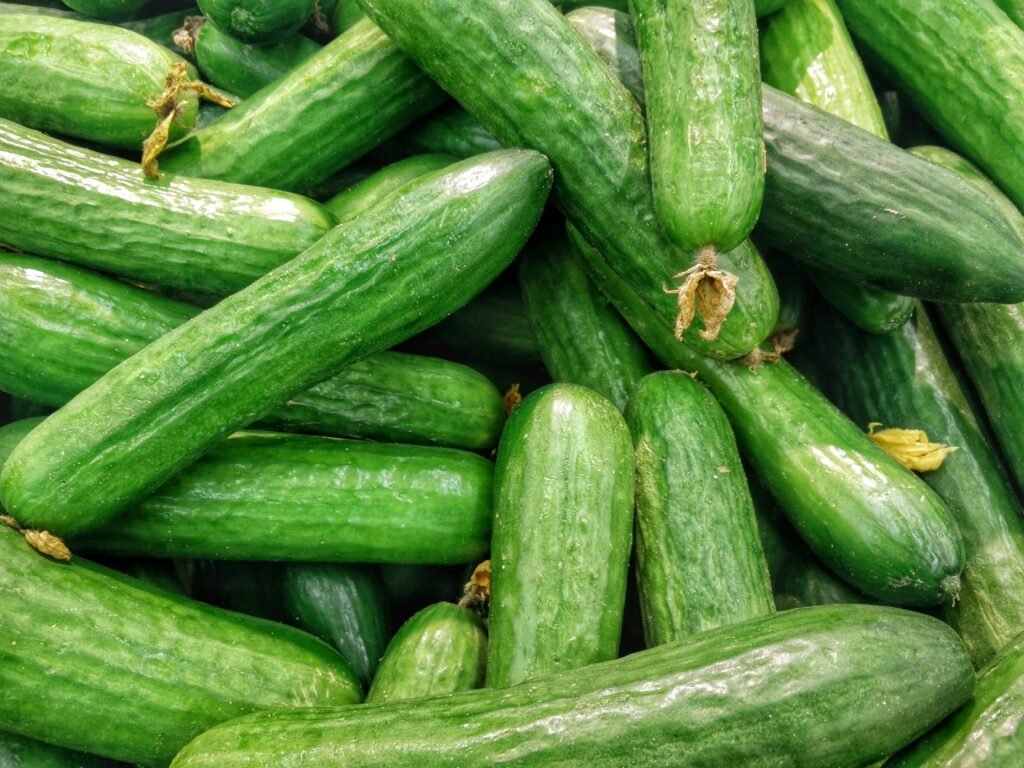
Cucumbers aren’t just a refreshing snack; they’re a hydration powerhouse. With over 95% water content, cucumbers are low in carbohydrates and calories, making them perfect for blood sugar management.
- Nutritional Profile:
- Water content: 95%
- Rich in antioxidants and small amounts of fiber
- Extremely low glycemic index
- Why They Work:
Cucumbers slow down glucose absorption thanks to their fiber content. Their hydrating properties also support kidney function, aiding in glucose elimination.
- Serving Suggestions:
- Slice cucumbers and infuse them in water with mint.
- Toss cucumber slices into a salad for extra crunch.
- Pair with hummus for a low-carb snack.
Dietitian Tip: Don’t peel the cucumbers; their skin contains additional fiber and nutrients!
2. Celery
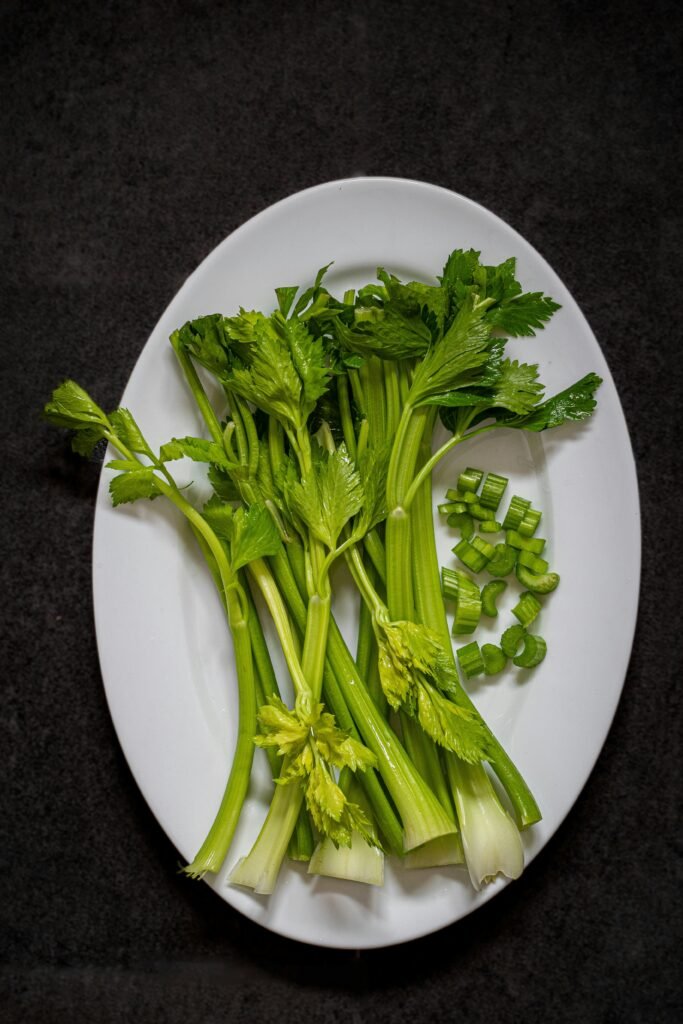
If you’ve overlooked celery as just another diet food, think again. Packed with 95% water and loaded with antioxidants, celery earns its spot on the list.
- Nutritional Profile:
- Water content: 95%
- Contains vitamins A and K plus antioxidants
- Why It Works:
Celery helps reduce inflammation often associated with diabetes, contributing to better insulin sensitivity.
- Serving Suggestions:
- Dip celery sticks in peanut butter or a light vegetable spread.
- Use celery as a low-carb base in soups and stews.
- Chop celery finely and mix it into chicken or tuna salad.
Dietitian Tip: Add celery juice to your morning routine for a refreshing start.
3. Spinach
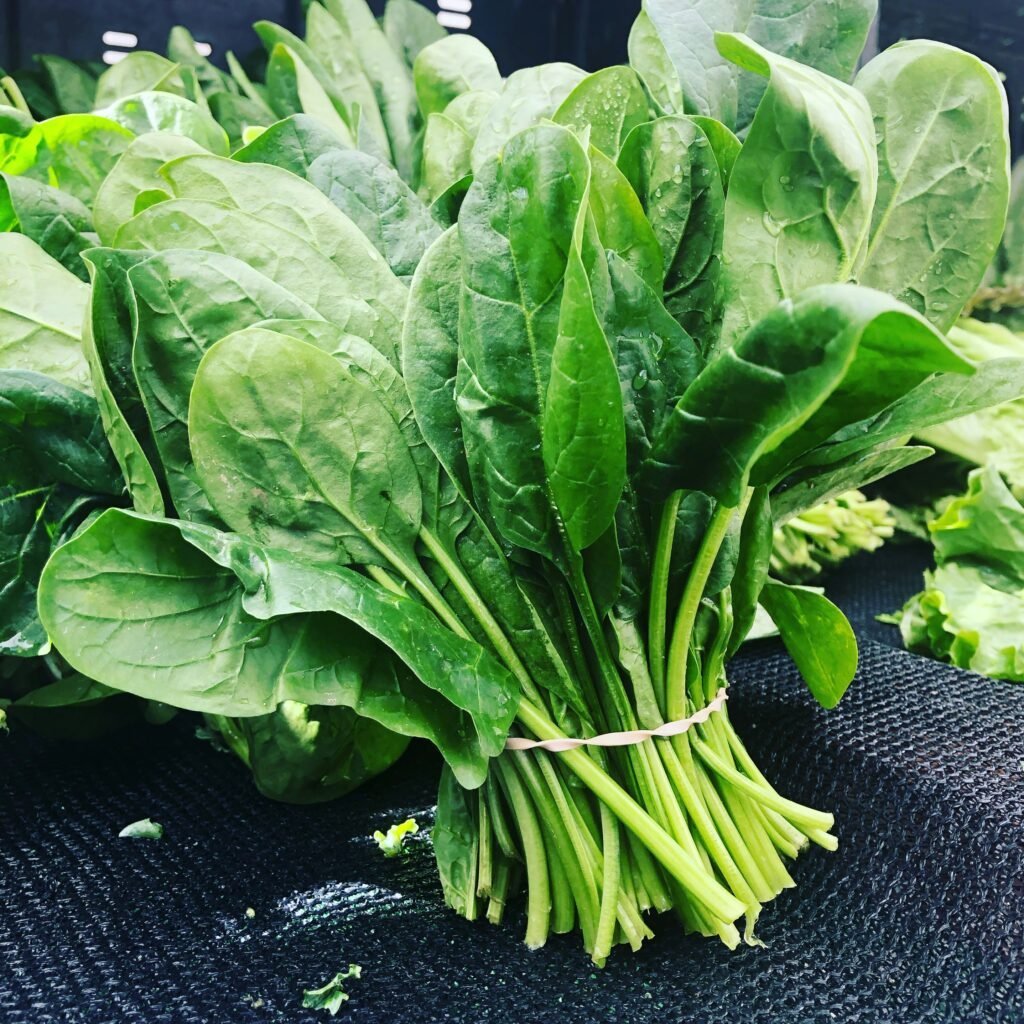
Spinach isn’t just a superfood; it’s a hydration hero too! This leafy green is brimming with water and magnesium, a nutrient essential for insulin function.
- Nutritional Profile:
- Water content: 91%
- High in magnesium and vitamin C
- Low carb and calorie count
- Why It Works:
Magnesium in spinach plays a direct role in improving insulin sensitivity, while its low glycemic load keeps blood sugar swings in check.
- Serving Suggestions:
- Toss fresh spinach with a lemon vinaigrette for a quick salad.
- Sauté spinach with garlic and olive oil for a nutrient-packed side.
- Add spinach to smoothies for a hydrating boost.
Dietitian Tip: Frozen spinach works just as well for soups or omelets, so stock up!
4. Strawberries
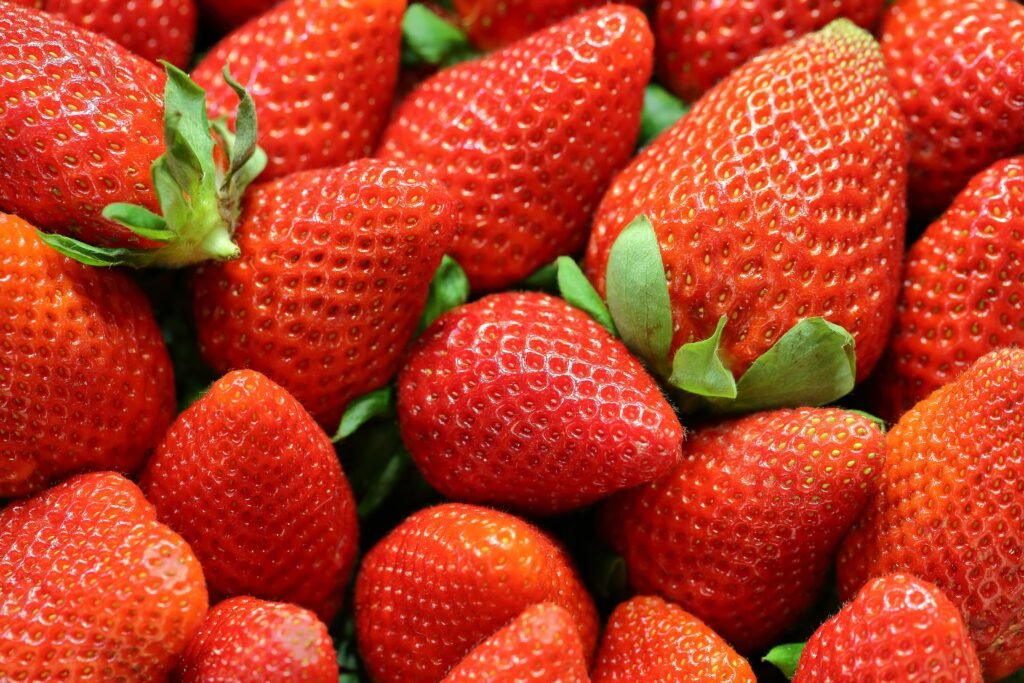
Sweet, juicy, and surprisingly low in sugar, strawberries combine hydration with a burst of antioxidants.
- Nutritional Profile:
- Water content: 91%
- Rich in vitamin C and manganese
- Low glycemic index (GI score of 41)
- Why They Work:
The fiber and antioxidants in strawberries improve insulin function and reduce post-meal glucose spikes.
- Serving Suggestions:
- Snack on fresh strawberries with a handful of almonds.
- Add them to yogurt or overnight oats for a hydrating, balanced breakfast.
- Toss sliced strawberries into mixed greens for a vibrant salad.
Dietitian Tip: Opt for organic strawberries when possible to avoid pesticide residue.
5. Zucchini
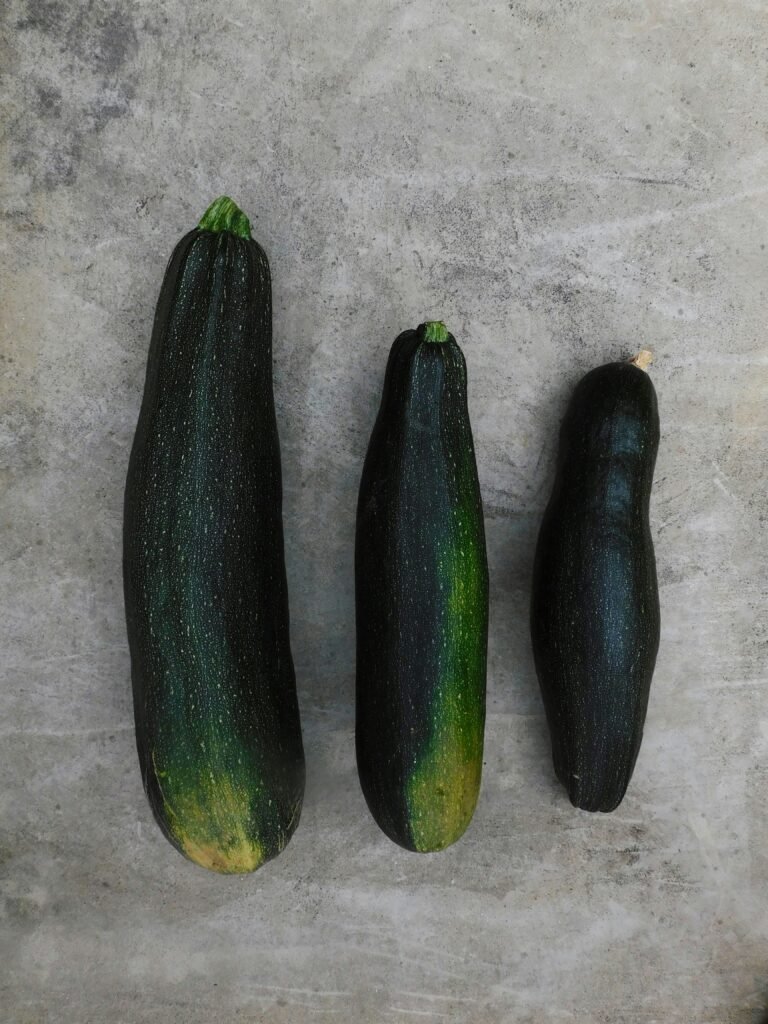
Zucchini is a versatile veggie that is equally hydrating and nutrient-packed.
- Nutritional Profile:
- Water content: 95%
- Rich in vitamins A, C, and fiber
- Low in carbs
- Why It Works:
Its high water and fiber content improve satiety and help manage post-meal blood sugar levels.
- Serving Suggestions:
- Spiralize zucchini into noodles and pair with a light tomato sauce.
- Grill zucchini slices as a flavorful side dish.
- Add chopped zucchini to stir-fries for extra crunch.
Dietitian Tip: Zucchini skin contains the most fiber, so leave it on!
6. Bell Peppers
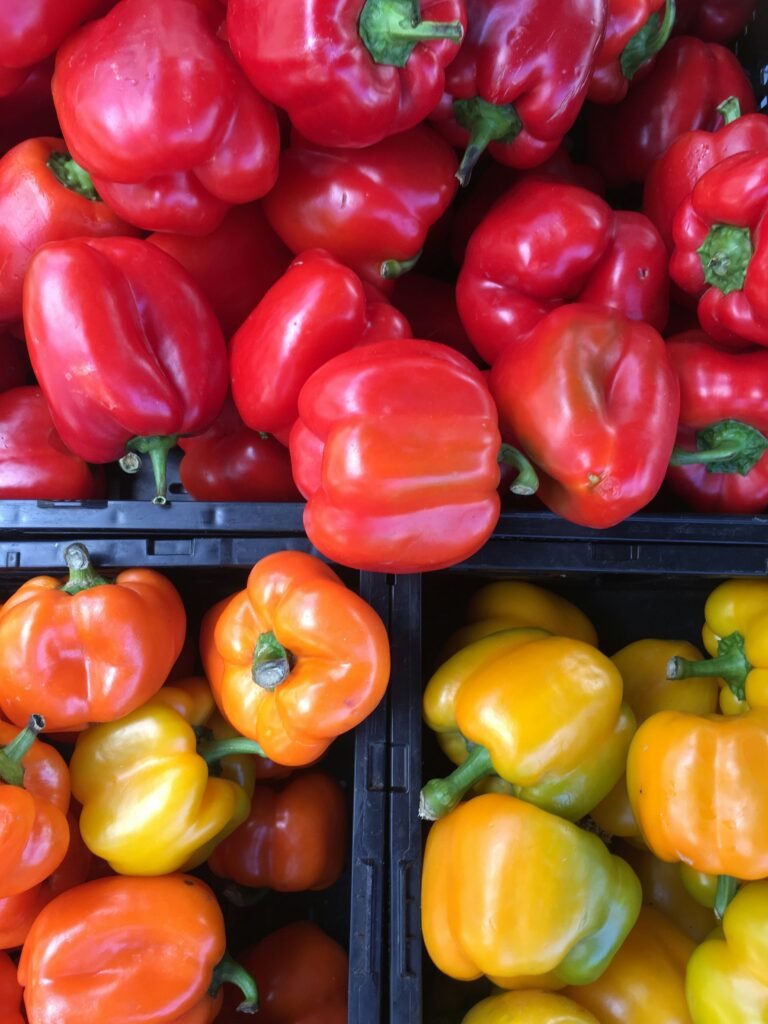
Colorful, crunchy, and loaded with water, bell peppers offer a hydrating solution with tons of vitamins.
- Nutritional Profile:
- Water content: 92%
- High in vitamin C, B6, and potassium
- Low-calorie and low-glycemic
- Why They Work:
Antioxidants in bell peppers reduce oxidative stress, a common issue for individuals with diabetes.
- Serving Suggestions:
- Dice them into a fresh salsa.
- Fill bell pepper halves with lean protein and quinoa, then bake.
- Slice and serve with guacamole as a low-carb snack.
Dietitian Tip: Red bell peppers are the sweetest and richest in vitamin C.
How to Incorporate These Foods into Your Diet
Introducing these hydrating foods is easier than you think! Here are some quick tips:
- Meal Planning:
- Breakfast: Spinach and strawberry smoothie
- Lunch: Grilled zucchini and bell pepper salad
- Snacks: Cucumber sticks with hummus
- Batch Cooking:
- Prep and store chopped celery, cucumbers, and bell peppers for quick snacks throughout the week.
- Hydrate with Recipes:
- Create cucumber-infused water or zucchini snacks for quick hydration boosts.
Overcoming challenges like taste preferences? Experiment with dressings, dips, and fun recipes to make these foods more enjoyable.
Why You Should Work with a Dietitian
While this guide arms you with valuable knowledge, personalized advice goes a long way. Dietitians can craft a meal plan tailored to your specific blood sugar needs, activity levels, and preferences. Think of them as your partner in achieving better glucose control while eating foods you genuinely enjoy.
Testimonial:
“I never thought I’d love eating veggies until my dietitian personalized my plan. Now, my A1C is stable, and I feel more energized!” – Sarah M.
Consider consulting one for sustainable blood sugar management.
Stay Hydrated and Take Control of Your Blood Sugar
Staying hydrated with the right foods is a simple yet effective strategy to support blood sugar control. With the guidance of this list and a little creativity in the kitchen, you’re well on your way to better health.
Looking for more personalized advice or ready to tackle new recipes? Consult with a dietitian today or try one of the recipes shared above. Your next step toward balanced blood sugar starts here!
